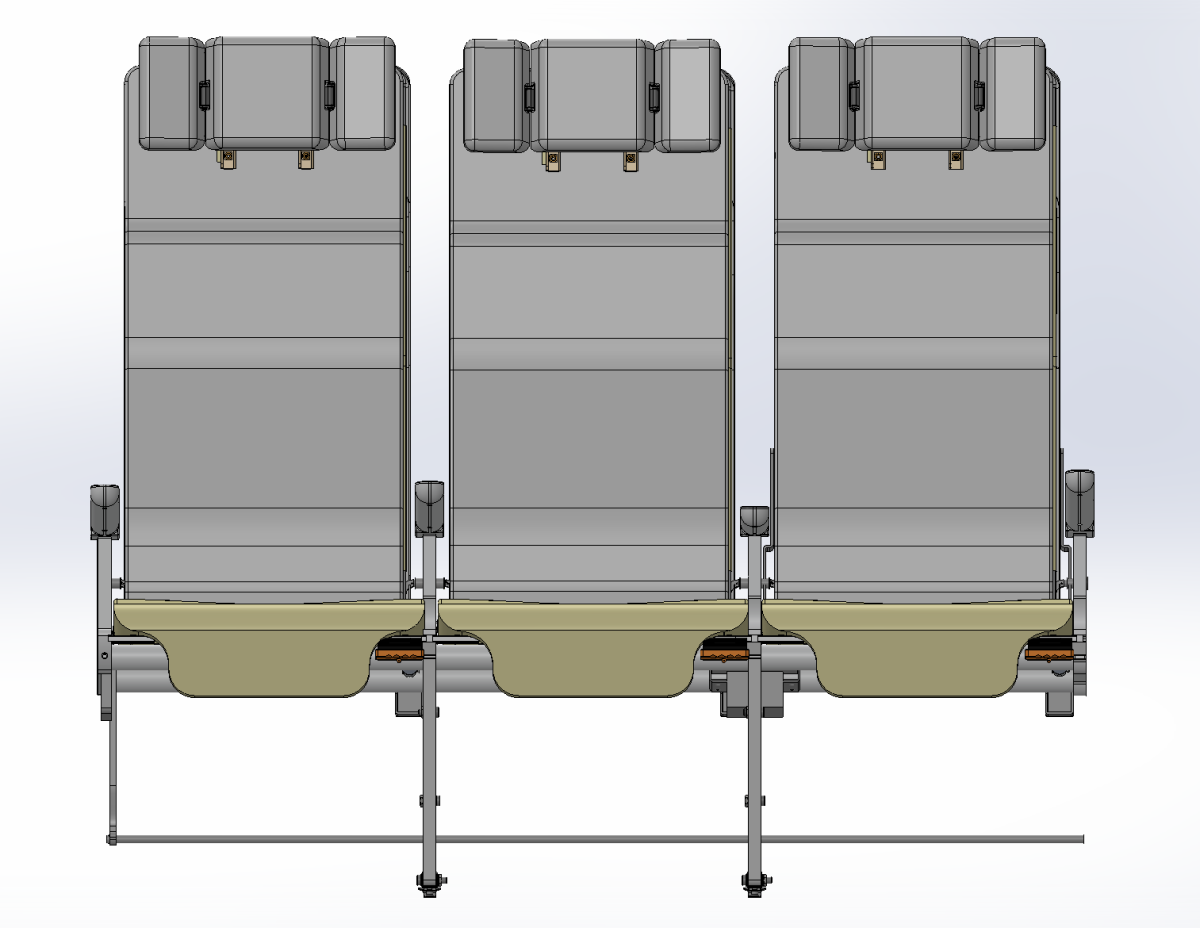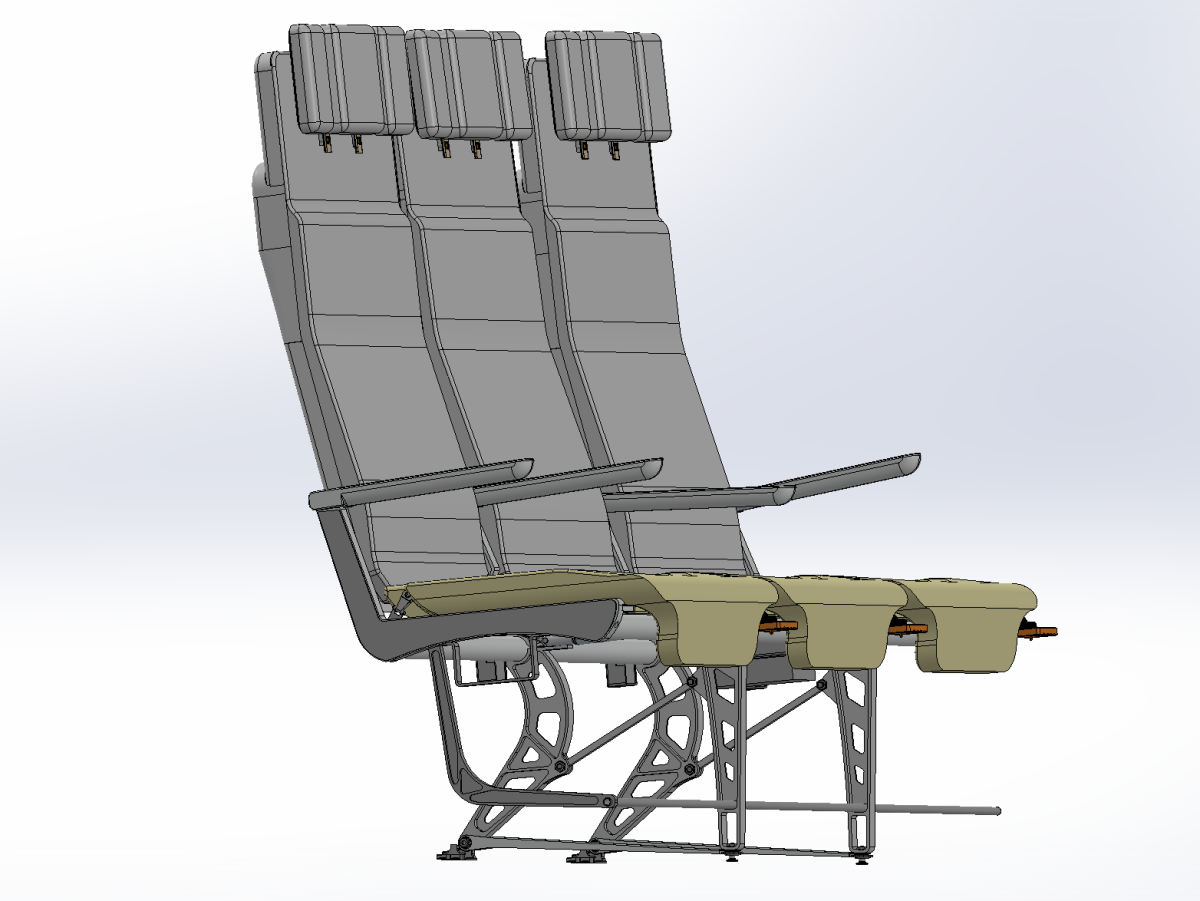✈️ The New Arcaro Aerospace Website: Redefining Digital Presence in Aviation
September 15, 2025Seat Design and Structural Analysis.
In 2019, a team of Warsaw University of Technology students, during an internship at Arcaro Aerospace, developed a comprehensive passenger economy-class seat design along with a structural stress analysis in line with aviation standards. 📄
Source: Design and stress analysis of passenger aircraft seats — Warsaw University of Technology repository (repo.pw.edu.pl)
Scope and Objectives
- Static and dynamic simulations were conducted in accordance with aviation certification requirements, including accelerations of 14 g along the spine axis (vertical) and 16 g with a lateral component (longitudinal aircraft axis).
- Finite Element Method (FEM) was used with Patran software and the Nastran solver to simulate stresses and deformations in the seat structure.
- Two models were created:
• Solid model – tetrahedral mesh (TET10)
• Shell model – quadrilateral mesh (QUAD4) - The comparison showed that the shell model provided accuracy similar to the solid model while being more computationally efficient.
- Additionally, natural vibration frequencies and buckling scenarios of the seat were analyzed.
- Based on stress maps and results, design modifications were proposed for areas at risk of exceeding the plasticity limit of aluminum.
Conclusions and Next Steps
While the static FEM analysis provided a solid foundation, it does not fully meet the certification requirements. The next stage should include dynamic crash testing with a dummy and simulations in software such as LS-DYNA.


